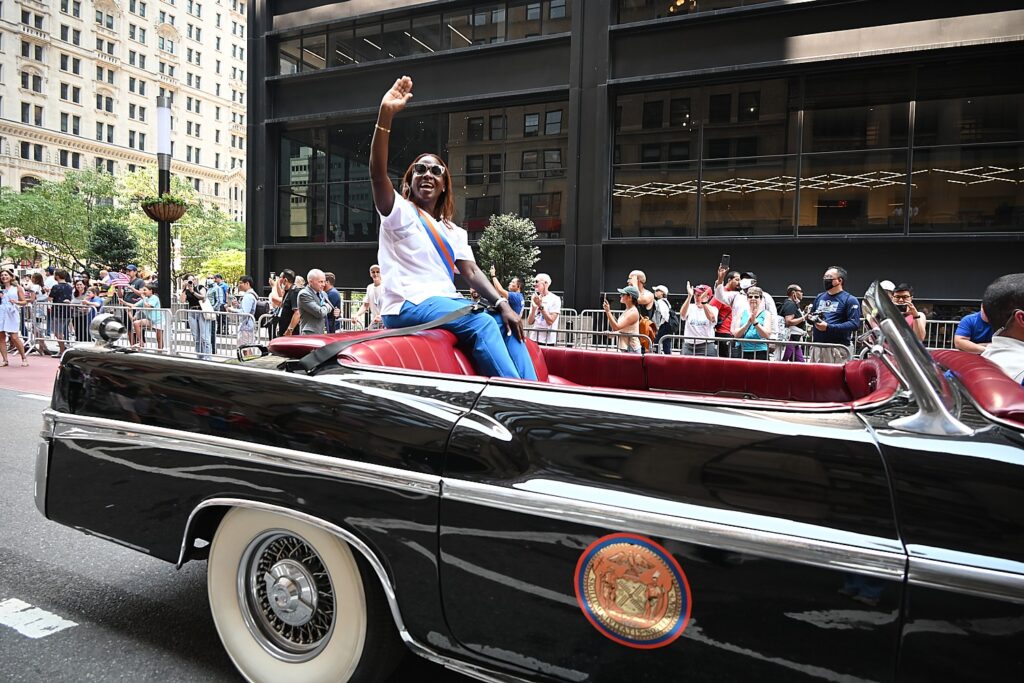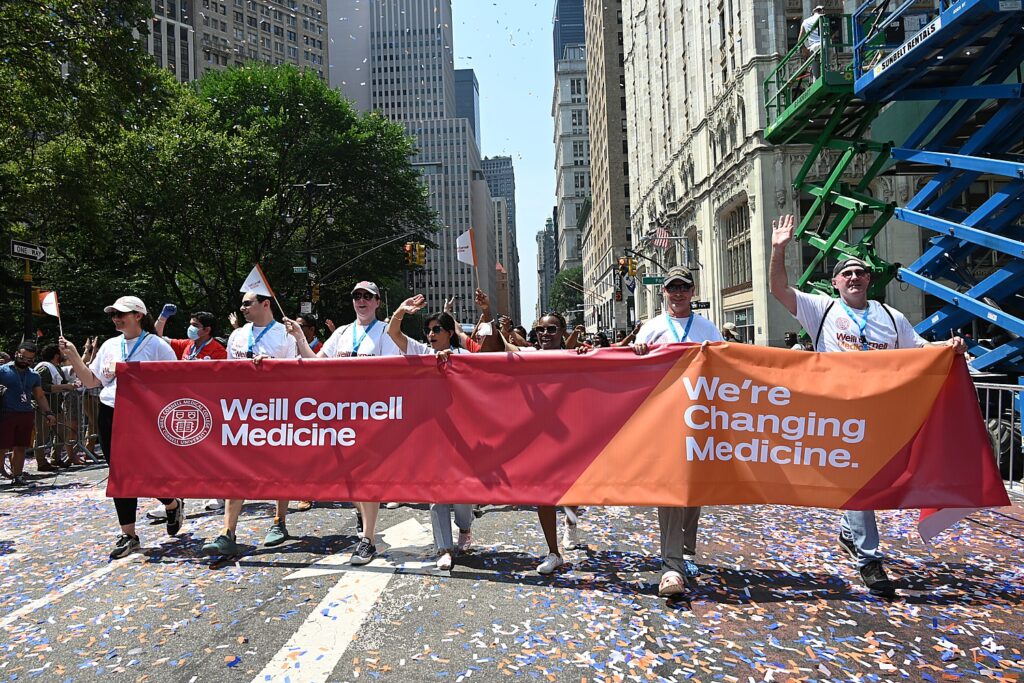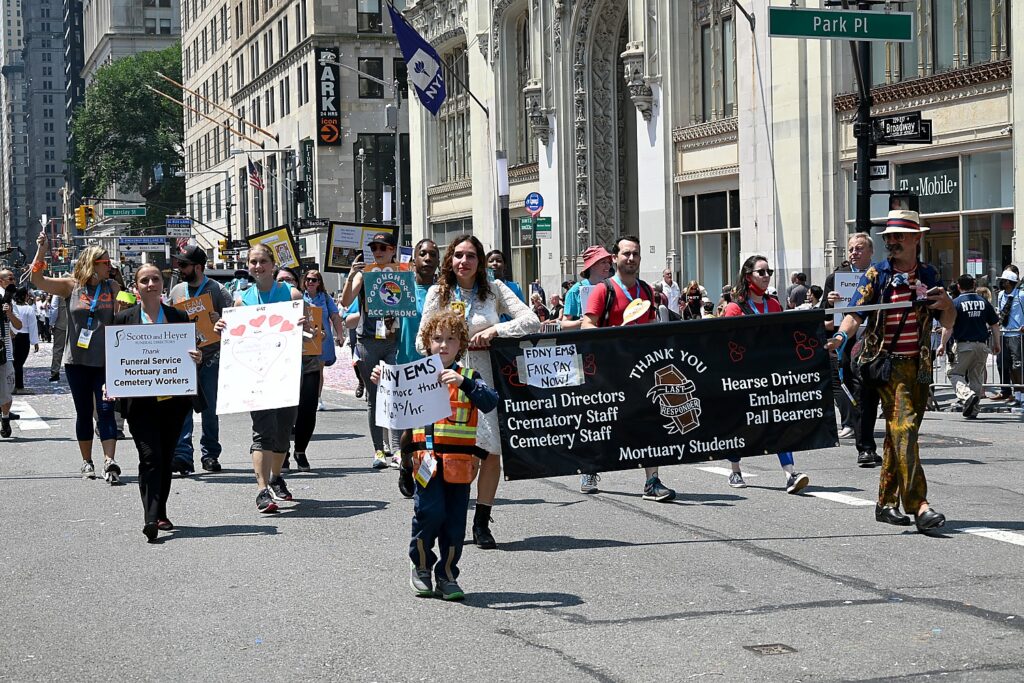
With the Delta variant of COVID-19 impacting younger people, including children too young to be vaccinated at this stage, the Biden Administration has taken decisive action to support the safe reopening of schools for in-person instruction and to address the pandemic’s disparate impact on students of color and other underserved students.
This is in stark contrast to some Republican Governors – Ron DeSantis of Florida and Greg Abbott of Texas stand out– who are actively sabotaging efforts for public schools to keep their students, faculty and community safe. DeSantis has actually threatened public school districts – including Broward, Florida’s second largest – with withholding funding if they dare impose a mask mandate (the school district rescinded its order).
In remarks about the latest efforts by the administration to get COVID-19 under control and prevent needless sickness and death (some 75,000 may die by November, according to some projections), President Biden said, “I say to these governors, ‘Please, help.’ But if you aren’t going to help, at least get out of the way of the people who are trying to do the right thing. Use your power to save lives.” (It’s as if these governors want to sabotage the Biden administration’s efforts to end the pandemic and so people suffer and then punish Democrats in the 2022 midterms and 2024 election.)
“As families across the country eagerly anticipate a return to school, the Administration is determined to ensure that our schools and students not only recover from the pandemic, but that we Build Back Better for the future.”
This fact sheet is from the White House:
Prioritizing safe reopening
The President made clear on Day One of this Administration that safely reopening schools was a national priority, signing the Executive Order on Supporting the Reopening and Continuing Operation of Schools and Early Childhood Education Providers, which launched a comprehensive effort across the White House, Department of Education, and Department of Health and Human Services to safely reopen schools for in-person instruction. The Department released two volumes of its COVID-19 Handbook focused on safely reopening schools and meeting the needs of students, and launched a clearinghouse of best practices for safely operating in-person and addressing the needs of students and staff. Secretary Cardona’s National Safe School Reopening Summit highlighted best practices from districts across the country to support safe in-person learning.
Vaccination is our leading strategy to end the pandemic, and—combined with the layered mitigation strategies recommended by the CDC—has the greatest potential to allow schools to reopen fully this fall and stay open for in-person learning. That’s why, in March the President prioritized teachers and school staff for access to the COVID vaccine. As a result, almost 90 percent of educators and school staff are now vaccinated. To get more of our students ages 12 and older vaccinated, the President is now calling on school districts nationwide to host at least one pop-up vaccination clinic over the coming weeks and directing pharmacies in the federal pharmacy program to prioritize this and to work with school districts across the country to host vaccination clinics at schools and colleges.
Heroic efforts from teachers, parents, and school staff, combined with the Administration’s aggressive vaccination push, has demonstrated that safe in-person learning is possible. Since January, the percentage of K-8 schools offering remote-only instruction decreased from 23 percent in January to only 2 percent in May.
However, there is still work to be done. During the pandemic, students of color have been less likely to be enrolled in in-person instruction. Data shows that on average students in remote learning report poorer well-being than those in in-person instruction. A continued reliance on remote learning threatens to further widen disparities. The Administration will continue to address the concerns of families, and provide support to states in creating safe, inclusive, and supportive learning environments.
Investing historic resources in equitable reopening
With the passage of the American Rescue Plan, the Biden-Harris Administration has invested a historic $130 billion to support schools safely reopening and addressing the needs of students, including $122 billion through the American Rescue Plan’s Elementary and Secondary School Emergency Relief Fund (ARP ESSER). ARP ESSER funding supports efforts to get students back in the classroom safely for in-person learning, to safely keep schools open once students are back, and to address the social, emotional, mental health, and academic needs of all students. This funding is being used to help schools safely operate, implement high-quality summer learning and enrichment programs, hire nurses and counselors, support the vaccination of students and staff, and invest in other measures to take care of students.
Ensuring funds address the needs of students. Districts and states must spend a combined minimum of 25 percent of the state’s total ARP ESSER funds, totaling nearly $30.5 billion, to address the impact of lost instructional time through summer learning or enrichment, extended day instruction, comprehensive afterschool programs, or other evidence-based practices. Funded strategies must also respond to students’ social and emotional needs and account for the disproportionate impact of the coronavirus on underserved students. The Administration recognizes that the communities that support our students have a critical understanding of what their students need and are key to ensuring funds have the greatest impact on students. As they put together their plans for the use of funds, states and school districts are required to engage a wide range of stakeholders during the planning process, including educators, school leaders and staff, students, families, civil rights organizations, and stakeholders representing the interests of students with disabilities, English learners, students experiencing homelessness, children in foster care, migratory students, students who are incarcerated and other underserved students.
Protecting high-poverty districts from funding cuts. The American Rescue Plan’s ARP ESSER program includes a first-of-its-kind maintenance of equity requirement to ensure that high-poverty school districts and schools are protected in the event of funding cuts. These requirements will ensure that school districts and schools serving a large share of students from low-income backgrounds will not experience disproportionate budget cuts—and that the school districts with the highest poverty levels do not experience any decrease in state per-pupil funding below their pre-pandemic level.
Ensuring states continue to fund education. The Department has emphasized the importance of the American Rescue Plan’s maintenance of effort requirement, which ensures that states continue to fulfill their commitments to fund their education systems, and has worked with states to ensure that they meet these requirements. The maintenance of effort requirement helps protect students by making sure that federal pandemic relief funds are used to meet the immediate needs and impacts of the pandemic on students and schools to the greatest extent possible, rather than to supplant general state funding for K-12 education.
Supporting effective implementation. The Department of Education has worked aggressively to support states and school districts in implementing education relief funding. This includes providing resources on how ARP ESSER funds can be used, including to support effective ventilation in schools, vaccination efforts, creating and expand full-service community schools , hiring nurses and counselors, and providing high-quality summer programs and high-dosage tutoring to students. With critical partners like the National Governors Association and Council of Chief State School Officers, the Department launched the Summer Learning and Enrichment Collaborative to support states providing high-quality summer learning and enrichment.
Stabilizing and ensuring access to child care. High-quality early care and education helps ensure that children can take full advantage of education and training opportunities later in life. The pandemic significantly disrupted the child care sector, threatening access to this critical support and threatening economic security for childcare workers, who are disproportionately women of color. The American Rescue Plan invested $24 billion in stabilizing the child care sector, and is helping to provide this essential industry—which provides vital opportunities for children—with more flexible funding to help more low-income working families access high-quality care, increase compensation for early childhood workers, and help parents to work.
Addressing the needs of students experiencing homelessness. The pandemic increased housing insecurity, and disproportionately impacted the education of students experiencing homelessness, who were less likely to be able to successfully engage in remote learning due to lack of reliable access to the internet. The Department of Education has released all $800 million in American Rescue Plan funds for identifying and addressing the needs of students experiencing homelessness, including by providing wraparound services and support ranging from afterschool to mental health services.
Supporting students with disabilities. The pandemic created serious challenges for many students with disabilities, who struggled to access special education and related services according to their individualized services plan. The American Rescue Plan provides support to students with disabilities and infants and toddlers with disabilities through the Individuals with Disabilities Education Act. To ensure states can deliver the necessary services and supports to young children and youth with disabilities, the American Rescue Plan devotes nearly $2.6 billion in grants to states to support elementary and secondary education students with disabilities, $200 million for preschool children with disabilities, and $250 million for infants and toddlers with disabilities and their families.
Bolstering Tribal education. The Bureau of Indian Education (BIE) is using $535 million in American Rescue Plan funds to support 183 BIE-funded K-12 schools, providing much-needed financial support to help Tribal communities recover more quickly from the pandemic’s wide-ranging impact.
Funding COVID testing. The American Rescue Plan includes $10 billion to support COVID-19 testing in schools. This funding will help to reopen schools, including in communities of color, which have been disproportionately impacted by the pandemic.
Protecting the rights of students. Protecting the rights of students to equal opportunity is an essential part of ensuring educational equity. The Department of Education has provided resources to school leaders, students, families and other stakeholders to ensure students’ rights are protected, including information about civil rights and school reopening and confronting COVID-19-related harassment against AAPI students. The Department of Education has moved swiftly to implement the President’s Executive Order on Guaranteeing an Educational Environment Free from Discrimination on the Basis of Sex, Including Sexual Orientation or Gender Identity; implement a comprehensive plan to address sexual harassment, including sexual violence, in schools; and make clear that it will enforce Title IX to prohibit discrimination based on sexual orientation and gender identity, including for LGBTQ+ students. The Department has also worked to address the disproportionately high rates of school discipline for students of color and students with disabilities that removes them from the classroom. The Department held a public convening on school discipline in May and launched a major, ongoing effort to address racial, disability-based and other disparities in the administration of school discipline.
Closing the digital divide. The American Rescue Plan included $7.2 billion for the E-Rate program, which helps support American schools by funding programs to help ensure K-12 students and teachers have the appropriate internet connections and devices for distance learning, a particular challenge in low-income and rural communities.
Supporting nutrition security. It is hard for students to learn successfully when they are experiencing hunger. Black and Latino households face food insecurity at twice the rate of white households. The American Rescue Plan guards against food hardship among students this summer by allowing states to continue the Pandemic-EBT program, which provides grocery benefits to replace meals for students who are eligible for free and reduced priced meals when schools are closed. It also increases SNAP benefits by 15 percent through September 2021, maintaining the increase through the summer, when childhood hunger spikes due to a lack of school meals. The U.S. Department of Agriculture likewise acted to offer flexibility for the 2021-2022 school year by providing waivers that allow schools to serve free meals to all students.
For more information on how President Biden’s Build Back Better agenda builds on this work by investing historic and vitally-needed resources that unlock opportunity for millions of Americans, please see the White House Fact Sheet on How the Biden-Harris Administration is Advancing Educational Equity.















































